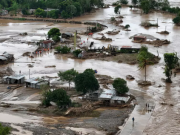
March is Fire Prevention Month and fires can happen at any time, and they can cause significant damage to your home and pose a serious threat to your safety. Fortunately, many fires can be prevented by taking some simple precautions and being aware of potential hazards. In this comprehensive guide, we’ll provide you with tips and strategies for fire prevention and safety in your home.
1. Install Smoke Alarms
Smoke alarms are the most important tool for fire safety in your home. Install smoke alarms in every room and hallway, and test them regularly to ensure they are working correctly.
Here are the things you should keep in mind for checking and maintaining your smoke alarms:
- Determine the number of smoke alarms needed
You should have at least one smoke alarm on every level of your home, including the basement, and inside each bedroom or sleeping area. If your home has multiple sleeping areas, consider installing additional smoke alarms in those areas.
- Choose the type of smoke alarm
There are two main types of smoke alarms: ionization and photoelectric. Ionization smoke alarms are better at detecting fast-burning fires, while photoelectric smoke alarms are better at detecting slow-burning fires. It’s recommended that you have both types of smoke alarms in your home, or a dual-sensor alarm that combines both technologies.
- Install the smoke alarms
Follow the manufacturer’s instructions for installing the smoke alarms. Generally, you should mount them on the ceiling or high on a wall, away from corners and at least 10 feet from cooking appliances to avoid false alarms. Make sure to test each smoke alarm after installation to ensure they are working properly.
- Replace the batteries
Smoke alarms typically run on batteries, so make sure to replace the batteries at least once a year or when the low-battery warning beeps. Some newer models come with long-life batteries that can last up to 10 years.
- Test the smoke alarms
Test your smoke alarms monthly by pressing the test button. If the alarm doesn’t sound, replace the batteries or the entire unit if necessary.
2. Keep Flammable Materials Away From Heat Sources
One of the most common causes of fires is flammable materials coming into contact with heat sources. To prevent fires in your home, be sure to keep flammable materials such as curtains, clothing, papers, and chemicals away from heat sources like stoves, ovens, space heaters, and candles.
Keeping flammable materials away from heat sources is an important safety precaution that can help prevent fires and explosions. Flammable materials are substances that can catch fire easily and burn rapidly, such as gasoline, propane, alcohol, and solvents. To prevent fires and explosions you should store flammable materials in a well-ventilated area that is cool and dry. It’s important to be aware of the dangers associated with flammable materials and take steps to protect yourself and those around you.
3. Use Caution with Cooking and Heating Appliances
Cooking appliances such as stoves and ovens are a common cause of house fires. It’s important to use caution when cooking, especially with high heat, oils, and grease. Always stay in the kitchen when cooking on the stove, and don’t leave the stove unattended even for a short period of time.
Keep flammable items like towels, paper, and plastic away from the stove. Be sure to clean the stove and oven regularly to prevent buildup of grease and food particles that can ignite and cause a fire.
4. Have an Emergency Plan in Place
In the event of a fire, it’s important to have a plan in place for how to evacuate your home safely. Make sure everyone in your household knows what to do in the event of a fire and where to meet outside. Practice fire drills regularly to ensure everyone knows what to do in an emergency.
Having an emergency plan in place is crucial to staying safe and prepared for unexpected events such as natural disasters, fires, or medical emergencies. A well-thought-out emergency plan can help you and your loved ones stay calm and focused during a crisis, and it can make all the difference in protecting your health and safety.
To create an effective emergency plan, start by identifying potential hazards in your area. Research the types of emergencies that could happen in your location and the best ways to prepare for them. This could include natural disasters such as earthquakes, hurricanes, or floods, as well as man-made disasters like fires or chemical spills.
Next, create a communication plan for your household. Make sure everyone knows how to reach each other in an emergency, and designate a meeting place where you can all gather if you need to evacuate. Consider keeping emergency contact information and important documents in a waterproof container or online storage, so you can access them quickly if you need to leave your home.
If you have children or pets, make sure to include them in your emergency plan. Discuss what they should do in an emergency, and practice evacuating with them so they know what to expect. Keep a supply of food, water, and medications for your pets, and make sure your children know where to find them.
5. Keep Fire Extinguishers on Hand
Having a fire extinguisher on hand can help you put out small fires before they become large, uncontrollable blazes. Keep a fire extinguisher in an easily accessible location, and make sure everyone in your household knows how to use it.
Keeping a fire extinguisher on hand is a vital safety precaution that can help protect your home, property, and loved ones from fire damage and injury. Fires can happen unexpectedly and can spread quickly, making it essential to have a fire extinguisher nearby to quickly extinguish small flames before they grow into a dangerous inferno.
When choosing a fire extinguisher, it is important to select one that is appropriate for the type of fire you may encounter. There are several types of fire extinguishers, each designed to combat specific types of fires, such as those caused by flammable liquids, electrical equipment, or combustible materials.
It is recommended that fire extinguishers be placed in easily accessible locations, such as in the kitchen, garage, and near other high-risk areas. Fire extinguishers should be mounted on a wall or kept on a sturdy surface, and should never be obstructed or hidden from view. In addition, it is important to check your fire extinguisher regularly to ensure that it is fully charged and in good working condition.
Everyone in your household should know how to use a fire extinguisher in case of an emergency. The PASS method is a simple technique that can be used to remember how to use a fire extinguisher:
- Pull the pin
- Aim the nozzle at the base of the fire
- Squeeze the handle to release the extinguishing agent
- Sweep the nozzle from side to side until the fire is completely extinguished
6. Be Mindful of Electrical Hazards
Electricity is a fundamental and essential part of modern life, powering everything from our homes and workplaces to our communication devices and transportation systems. However, it’s crucial to remember that electricity can also be incredibly dangerous and even deadly if we don’t handle it properly. That’s why it’s essential to be mindful of electrical hazards and take steps to stay safe around electricity.
One of the most important things to keep in mind when it comes to electrical safety is that water and electricity don’t mix. Water is a great conductor of electricity, which means that even a small amount of water can increase the risk of electric shock or electrocution. It’s crucial to keep electrical appliances and cords away from water sources, such as sinks, bathtubs, and pools.
Another potential electrical hazard is damaged electrical cords and appliances. Frayed cords, broken plugs, and damaged appliances can all increase the risk of electric shock or even start a fire. It’s essential to regularly check all electrical cords and appliances for damage and replace any that are not in good condition.
It’s also crucial to be careful when using electrical appliances and tools, especially when they are plugged in. Never touch electrical appliances or tools with wet hands or when standing in water, and never use them near flammable materials. Additionally, it’s essential to use the right kind of tool for the job and to always follow the manufacturer’s instructions.

























